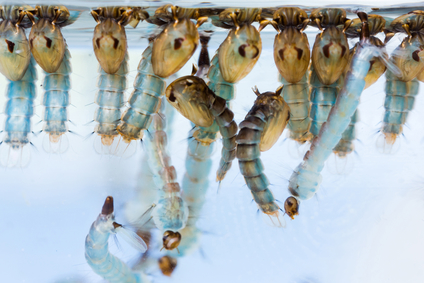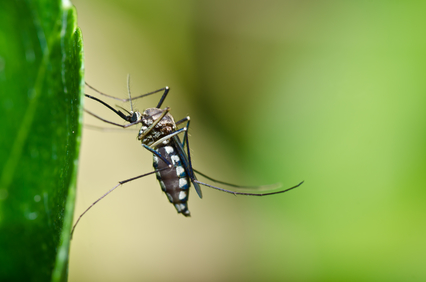The Life Cycle Of The Mosquitoes You Dread
- Esther M.
- Jan-13-2021
- Prince George's
If you’ve ever been bitten by a mosquito, it’s time you got to know a few facts about these bugs. First, it was a female mosquito that bit you. Male mosquitos don’t bite people, they survive on nectar. The female, on the other hand, needs blood to nourish and develop the eggs. Second, the average mosquito dies of old age at two months. This is if it doesn’t die from being eaten by a predator or from a death clap delivered by a human being.
The basic life cycle of a mosquito is in four stages namely Egg, Larvae, Pupa, and Adult. This starts after the female mosquito has had its fill of blood. It goes into rest mode and after two to three days, it will lay its eggs generally in water, or near water. Below is a description of the various life stages of a mosquito.
Egg

This is the initial stage. For these eggs to hatch, they need to be on a water surface. They are laid one at a time. But once they are in the water, they will attach together to form something like a raft.
Only female mosquitoes have the ability to lay eggs. In order to develop eggs, most females need a blood meal. With each blood meal, the female can lay several hundred eggs. The eggs are laid in or around water. Some mosquitoes lay their eggs in a raft, like you see in the image above, while others lay them singly. After 24 to 48 hours, the eggs will hatch and release larvae. There are traps that attracts container mosquitoes, like Aedes aegypti and Aedes albopictus. Females come into the trap to lay eggs near the water, but instead encounter a killing agent. Read more from Adapco…
Larvae

Once the eggs have been in the water for two to three days, they will hatch and get into the larvae stage. What happens during this stage?
During the larval stage of a mosquito’s life cycle, they produce a well-developed head with mouth brushes that are used for feeding, a large thorax with no legs, and a segmented abdomen. During the larval stage of a mosquito’s life cycle they must breathe air to survive which is why during this larval stage, they generally remain on the surface of the water and only dive down from time to time for nourishment or to escape a from a predator.
Most mosquito larvae have siphon tubes for breathing and hang from the water’s surface. Other mosquito species do not have siphon tubes and lay parallel to the water’s surface in order to get a supply of oxygen through a breathing opening. During the larval stage of a mosquito’s life cycle, they feed on micro-organisms and organic matter by filtering small particles from the water. Mosquitoes shed their skin four times during their larval stage and grow larger with each molting. After about 7-14 days in the larval stage the larva changes into a pupa after the fourth molting. Read more from Northline Express…
Pupa
In this stage, the mosquito does not feed. But it still lives underwater. and will be swimming around in the water it is located in. In this stage is also known as the tumbler. The primary focus in this stage is transformation. Depending on the temperature of the water, it can be fully formed in two days; some can take up to four days. When it is fully developed, it will shed off its skin and emerge as a full-grown adult mosquito.
Adult

The male mosquito tends to live for a shorter period than the female mosquito, on average, ten days. The main tasks of the mosquito after becoming an adult is food and mating.
Mosquitoes reach adulthood after emerging from their pupal casings. Males hatch first and are followed by the females shortly afterward, at which time there is a mating swarm. Males live for few days to a couple of weeks, but females can live for almost a month or so. The males feed on nectar; however, as you learned, the females will need a blood meal at some point, which they get through . After finding a blood meal, the female lays her eggs and starts the cycle again. Under favourable environmental conditions, the life cycle can be completed at least in 10 to 18 days. Read more from Orkin…
In all these stages, it is possible to eliminate these biting creatures. In the water and even when they are fully grown. This is why pest control companies are there to serve you. If you are looking for the best pest control company in Maryland, Backyard Bug Patrol is a clear winner. Always delivering beyond expectation, we are here for you. Call us today.
Related posts:
- The Benefits Of Choosing a Pest Control Company in Brandywine, MD
- Interesting Facts About Crickets in Upper Marlboro, MD
- Need A Remedy For Your Mosquito Problem in Clinton, MD? Consider These Factors
- Little-Known Facts About Fleas In Riverdale, MD
- Are Mosquitos Just A Malaria Risk in Capitol Heights, MD Or Is There More?
